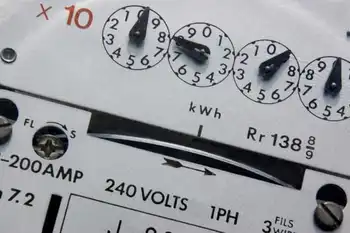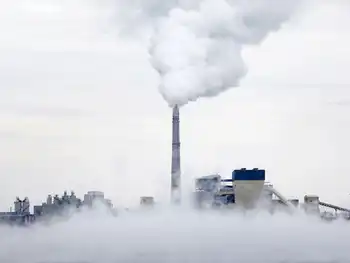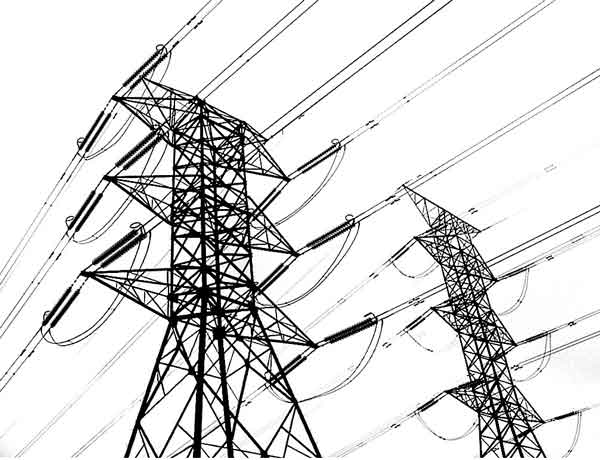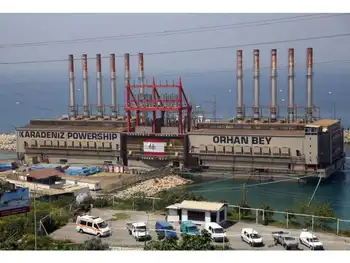Fuel rods likely melting in Japanese reactors
By Toronto Star
High Voltage Maintenance Training Online
Our customized live online or in‑person group training can be delivered to your staff at your location.

- Live Online
- 12 hours Instructor-led
- Group Training Available
Chief Cabinet Secretary Yukio Edano said: “Although we cannot directly check it, it's highly likely happening.”
Some experts would consider that a partial meltdown of the reactor. Others, though, reserve that term for times when nuclear fuel melts through a reactor's innermost chamber but not through the outer containment shell.
Meanwhile, Japan has provided 230,000 units of stable iodine to evacuation centres as a precautionary measure in the country's nuclear emergency, the UN atomic watchdog said.
The International Atomic Energy Agency IAEA, citing information it had received from Japanese authorities, said about 185,000 residents in areas near nuclear power plants affected by the quake had been evacuated by March 13.
Iodine can be used to help protect against thyroid cancer in the case of radioactive exposure in a nuclear accident.
“Japan has distributed 230,000 units of stable iodine to evacuation centres from the area around Fukushima Daiichi and Fukushima Daini nuclear power plants, according to officials,” the IAEA said in a statement on its Facebook page.
“The iodine has not yet been administered to residents the distribution is a precautionary measure in the event that this is determined to be necessary,” it said.
Earlier, a Japanese utility says fuel rods at a troubled nuclear reactor were once again fully exposed hours after authorities were able to stabilize a similar emergency.
Tokyo Electric Power Co. says the exposure happened at Unit 2 of the Fukushima Dai-ichi plant because a steam vent wouldn't open, causing a sudden drop of water.
That reactor and two others at the plant are dangerously overheating and authorities are racing to prevent meltdown.
A second hydrogen explosion in three days rocked a Japanese nuclear plant, devastating the structure housing one reactor and injuring 11 workers. Water levels dropped precipitously at another reactor, completely exposing the fuel rods and raising the threat of a meltdown.
The morning explosion in Unit 3 of the Fukushima Daiichi plant was felt 40 kilometres away, but the plant's operator said radiation levels at the reactor remained within legal limits. Hours later, officials reported that fuel rods at Unit 2 were fully exposed at some point and may have been damaged.
Authorities have been pouring sea water into three reactors at the plant after cooling system failures in the wake of Friday's massive earthquake and tsunami, which is estimated to have killed at least 10,000 people. The latest explosion triggered an order for hundreds of people to stay indoors, said Chief Cabinet Secretary Yukio Edano.
Authorities said that they were focusing mostly on Unit 2 because the other two reactors were relatively stabilized. Ryohei Shiomi, an official with the Nuclear and Industrial Agency, said officials were still trying to determine the condition of Unit 2's exposed fuel rods.
“It is very likely that they have been damaged by now,” he said.
Before the explosion, officials were aware of the risk of a blast. Operators knew that flooding Unit 3 with seawater would cause a pressure buildup in the reactor containment vessel but felt they had no choice if they wanted to avoid a total meltdown. In the end, the hydrogen in the released steam mixed with oxygen in the atmosphere and set off the blast.
The inner containment shell surrounding the Unit 3 reactor was intact, Edano said, allaying some fears of the risk to the environment and public. But the outer building around the reactor appeared to have been devastated, with only a skeletal frame remaining.
Tokyo Electric Power Co., which operates the plant, said radiation levels at Unit 3 were well under the levels where a nuclear operator must file a report to the government.
A similar explosion occurred at the plant's Unit 1, injuring four workers, causing mass evacuations and destroying much of the outer building.
Shortly after the most recent explosion, Tokyo Electric warned it had lost the ability to cool Unit 2. Hours later, an indicator showed water briefly fell to the bottom of fuel rods, fully exposing them, according to a spokeswoman for the company, Takako Kitajima. Officials have continued to inject seawater into the reactor.
More than 180,000 people have evacuated the area in recent days, and up to 160 may have been exposed to radiation — pouring misery onto those already devastated by the twin disasters.
Japan's meteorological agency reported the prevailing wind in the area of the stricken nuclear plant was heading east — to the Pacific.
The U.S. navy moved several U.S. ships away from the plant after detecting low-level radiation on 17 helicopter crew members positioned there for relief efforts.
Navy Cmdr. Jeff Davis, a spokesman for the U.S. 7th Fleet, said that the Navy is committed to continuing the operation to help the Japanese after the earthquake and tsunami. But he says officials had to figure out how to continue safely after airborne radiation was detected by the carrier USS Ronald Reagan and on a helicopter crew returning to the ship from search and rescue operations.
By moving the ships in the carrier group out of the downwind path of the power plant, Davis says the navy can continue with less risk to Americans participating.
Officials have declared states of emergency at six Fukushima reactors, where the twin disasters knocked out the main cooling systems and backup generators. Three are at Daiichi and three at the nearby Fukushima Daini complex.
Most attention, though, has been focused on Daiichi units 1 and 3, where operators have been funneling in seawater in a last-ditch measure to cool the reactors. A complete meltdown — the melting of the radioactive core — could release radioactive contaminants into the environment and pose major, widespread health risks.
Edano said no Fukushima reactor was near that point, and he was confident of escaping the worst scenarios.
International scientists say there are serious dangers but little risk of a Chernobyl-style catastrophe. Chernobyl, they note, had no containment shell around the reactor.
“The likelihood there will be a huge fire like at Chernobyl or a major environmental release like at Chernobyl, I think that's basically impossible,” said James F. Stubbins, a nuclear energy professor at the University of Illinois.
And, some analysts noted, the length of time since the nuclear crisis began indicates that the chemical reactions inside the reactor were not moving quickly toward a complete meltdown.
“We're now into the fourth day. Whatever is happening in that core is taking a long time to unfold,” said Mark Hibbs, a senior associate at the nuclear policy program for the Carnegie Endowment for International Peace. “They've succeeded in prolonging the timeline of the accident sequence.”
But despite official assurances, many residents expressed fear over the situation.
“First I was worried about the quake,” said Kenji Koshiba, a construction worker who lives near the plant. “Now I'm worried about radiation.” He spoke at an emergency centre in Koriyama, about 60 kilometres from the most troubled reactors.
Overall, more than 1,500 people had been scanned for radiation exposure in the area, officials said.
The UN nuclear agency said a state of emergency was also declared at another complex, the Onagawa power plant, after higher-than-permitted levels of radiation were measured there. It said Japan informed it that all three of those reactors there were under control.
Four nuclear complexes in northeastern Japan have reported some damage from the quake or the tsunami.











